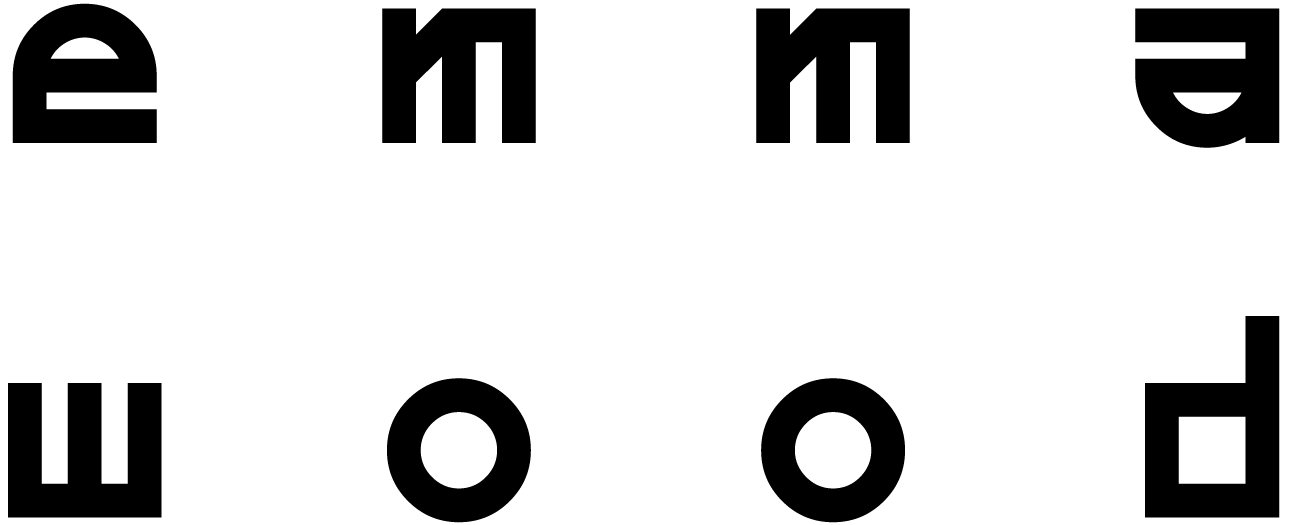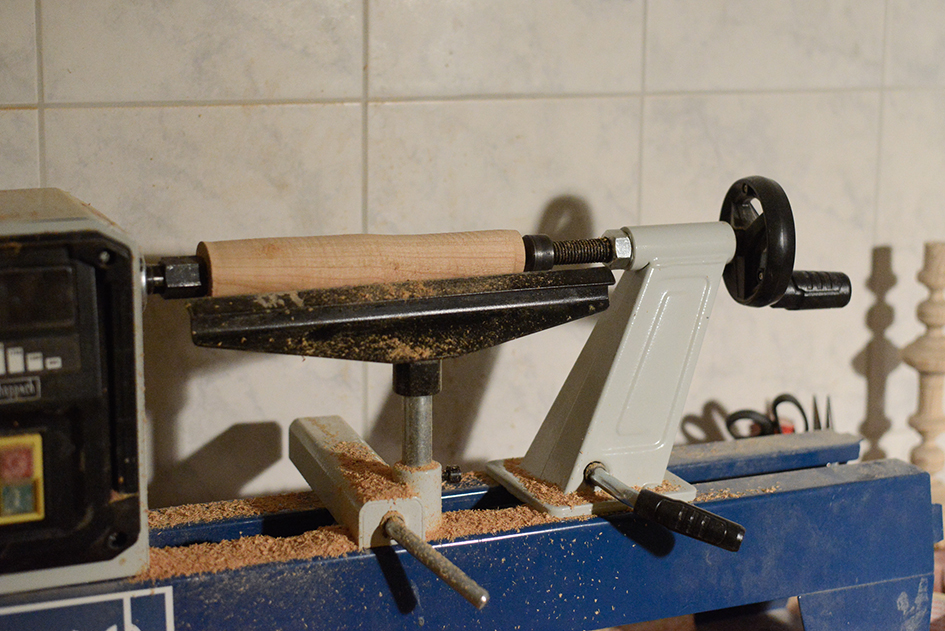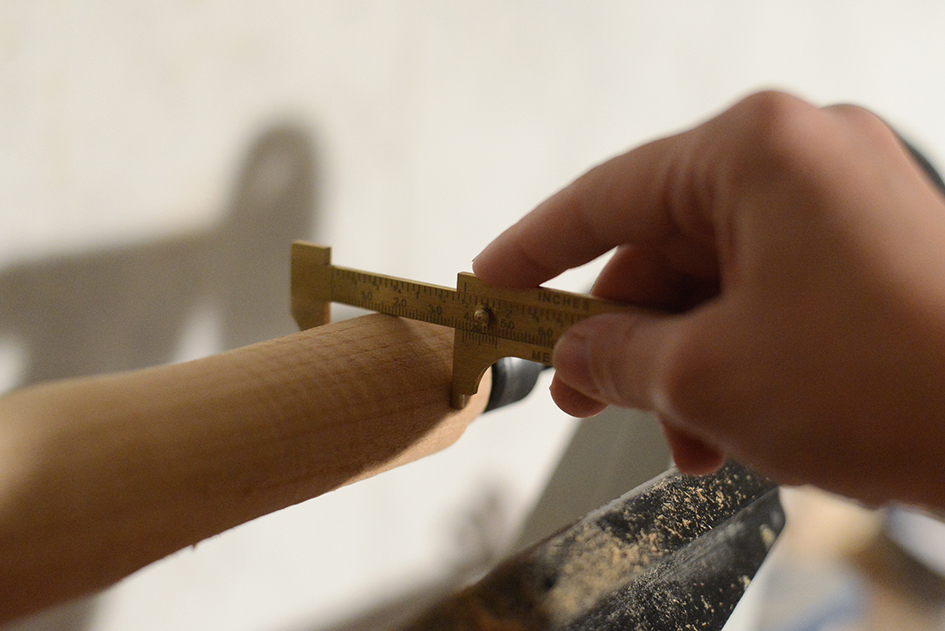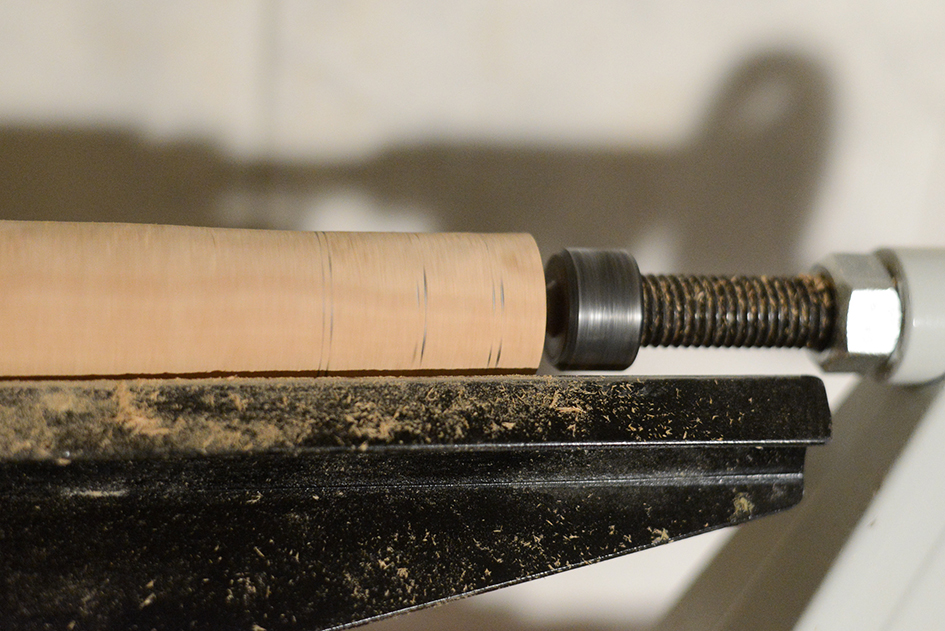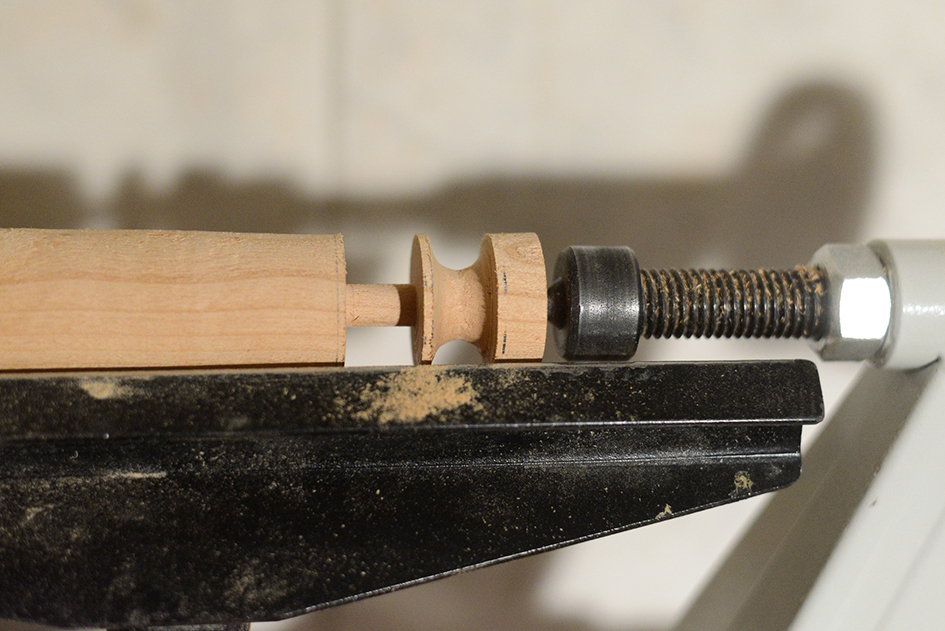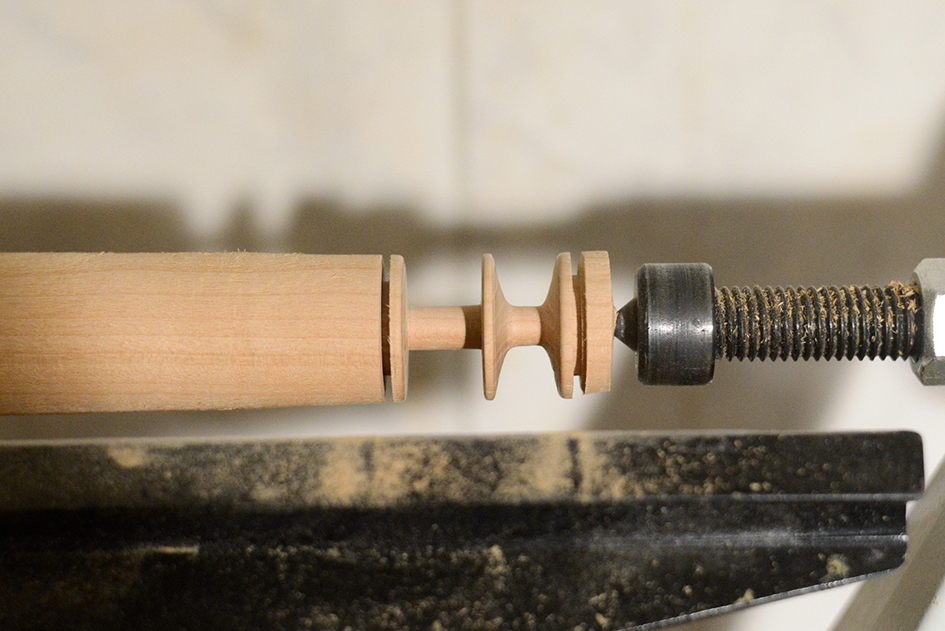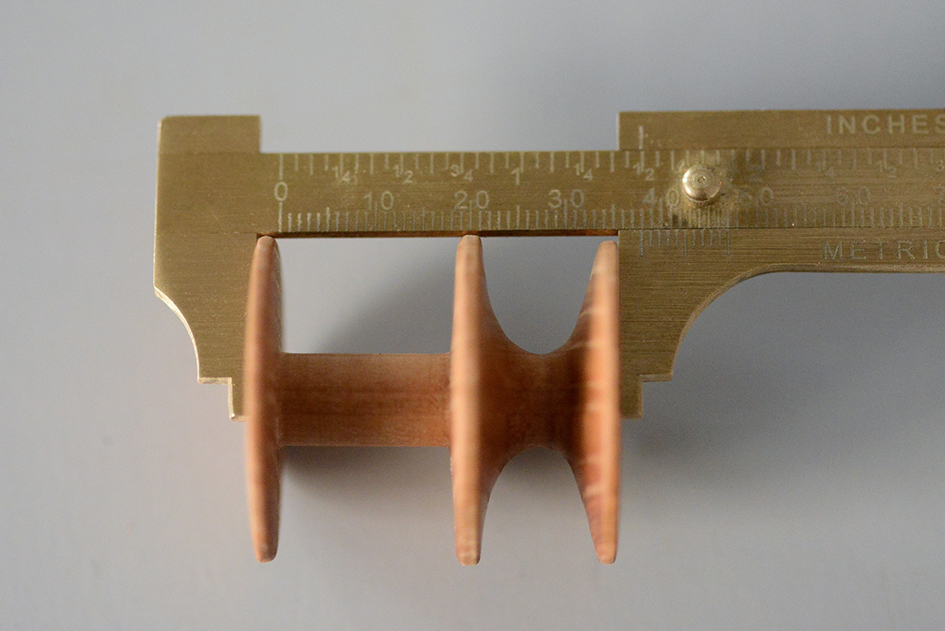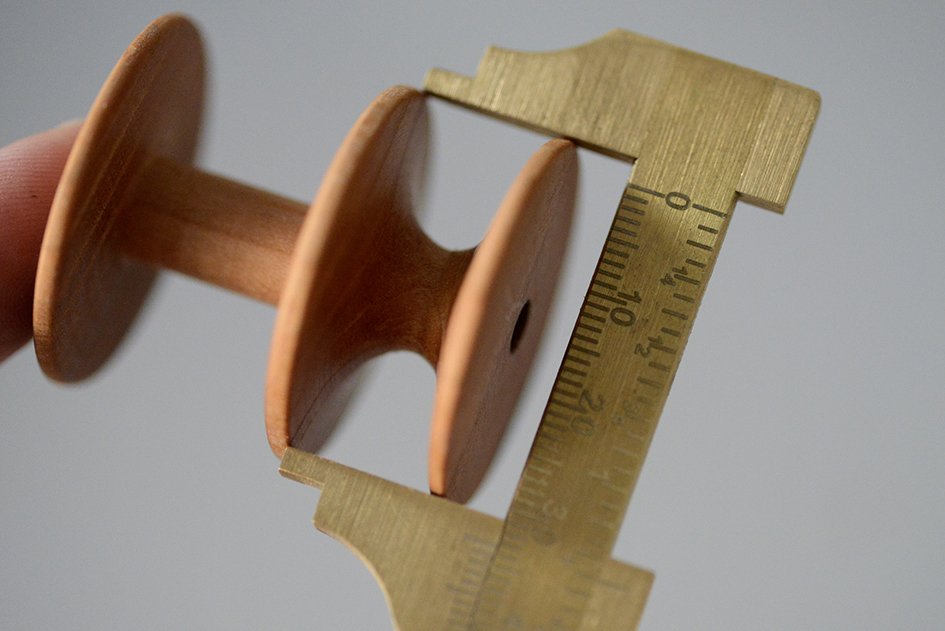bobbin prototyping_01
The first experiments in making a velvet bobbin.
As I start mapping out the beginnings of this project I recognised a need for some “materiality” to ground myself, something physical to grasp alongside the theoretical foundations I am starting to lay. The obvious place to begin was with the velvet bobbins, so I picked up the task of making a velvet bobbin.
planning the bobbin
Diderot & d’Alembert provide to-scale illustrations of a velvet creel and its components, including bobbins1. The measurement used is pieds du roi, a medieval French royal measurement equivalent to 32,48cm by today’s standard2. In the illustration, one pied du roi measured 34mm long. Using this foundational information, I measured the illustration to make the following conversions:
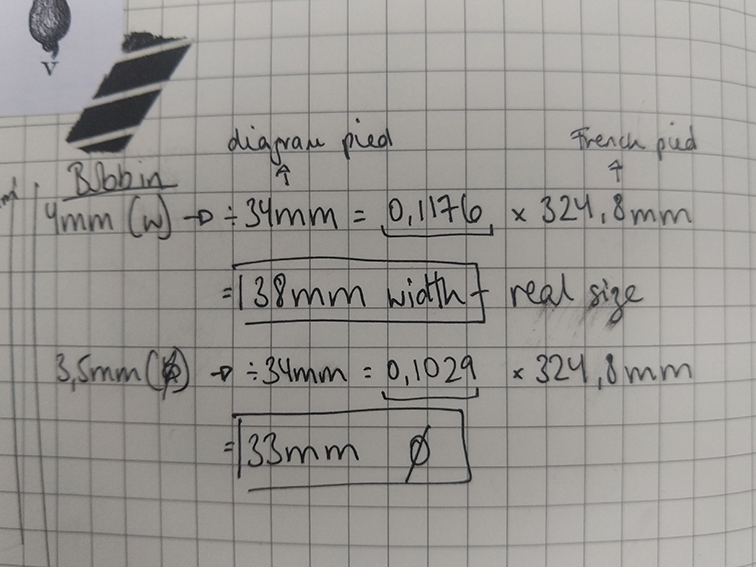
making the bobbin
I started out using scrap wood I had in my workshop from previous projects. The materials I had to choose from were olive, birch or cherry wood. From previous experience, I know that olive wood is quite soft and easy to carve, but that I quite quickly find the smell overpowering. Knowing how many bobbins I will want to carve, I didn’t want to be faced with 1000 scents of olive wood, so I ruled that out. Birch is a wood that I have less experience with carving. It is less expensive than cherry but is harder, making it more difficult to turn. Cherry is the wood I have the most experience with turning. It is less prone to rot than birch, so it has greater durability. It is soft enough to turn with relative ease, and has a naturally smooth finish, which is important for a component that will be laden with filament yarns (i.e. silk & silver) that have a tendancy to catch on rough surfaces. Based on this, I decided to work with cherry wood for the first prototypes.
I began with roughing out the wood to get an even diameter of just over 33mm. I then marked out the needed width measurements with pencil, and started carving the bobbin. The larger section that holds the yarn needs to have a straight core with borders that sit perpendicularly. This allows for a balanced build-up of yarn across the bobbin, and maximises the length of yarn the bobbin can hold. The section which holds the weighted string is slightly narrower, and has a curved core and borders. This makes it faster to carve and ensures the string sits centred in the section, instead of shifting off-balance.
The carving of the first bobbin went pretty well to begin with, but my tool caught on the rim of one side and one end of the bobbin snapped off, leaving me back at the beginning. Over the rest of the afternoon I carved five more bobbins. Each was an improvement in some ways, but also fell short of the desired end result.
Here’s a breakdown of the prototyping results:
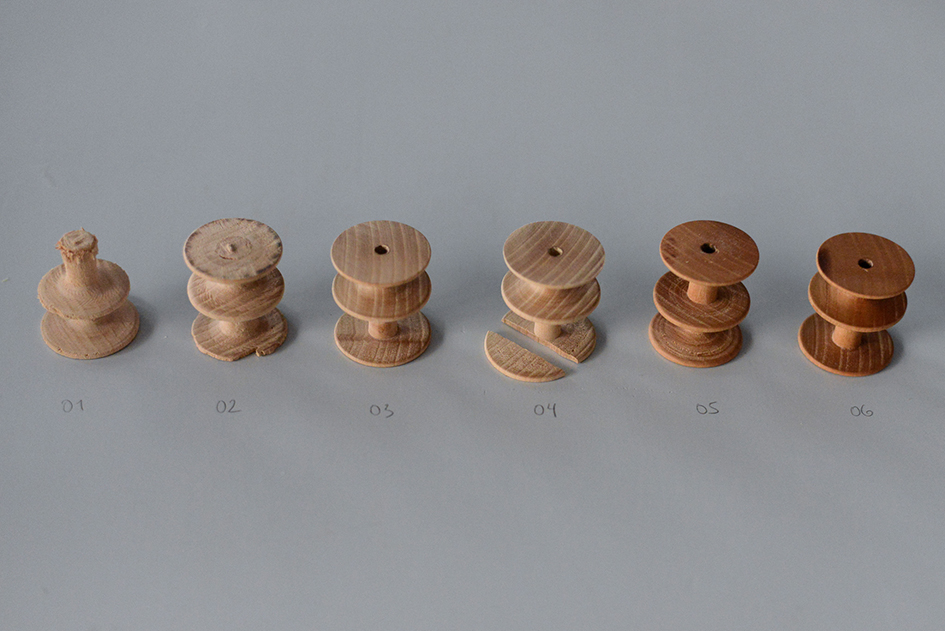
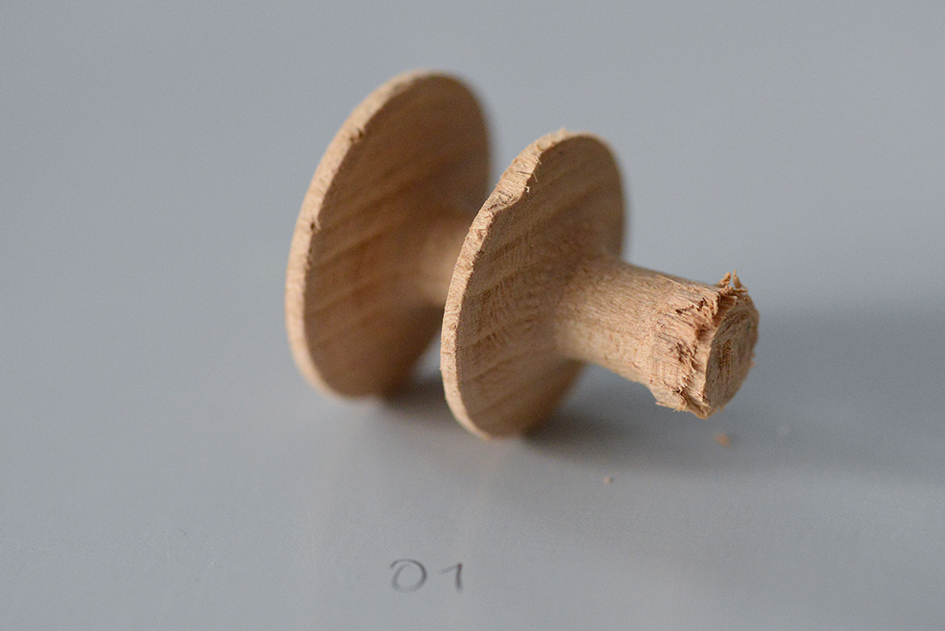
bobbin_01
- Snapped off at the end of being turned
- Chipped rims
- Striation
- Pretty heavy grain tear-out
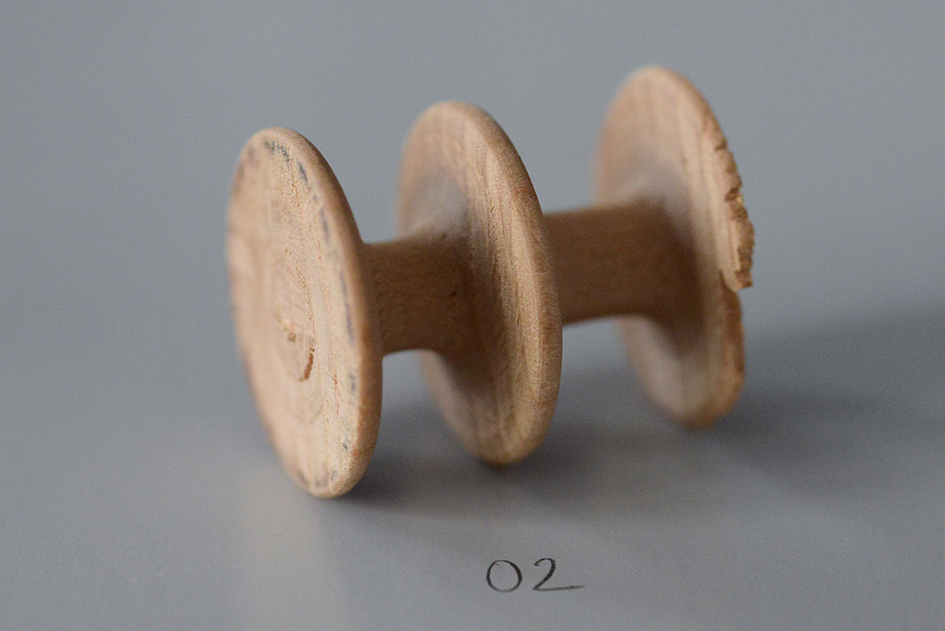
bobbin_02
- Badly chipped rims
- Striation
- Moderate grain tear-out

bobbin_03
- Better rims
- Off-centre drilled hole
- 2mm too long
- Pretty heavy grain tear-out
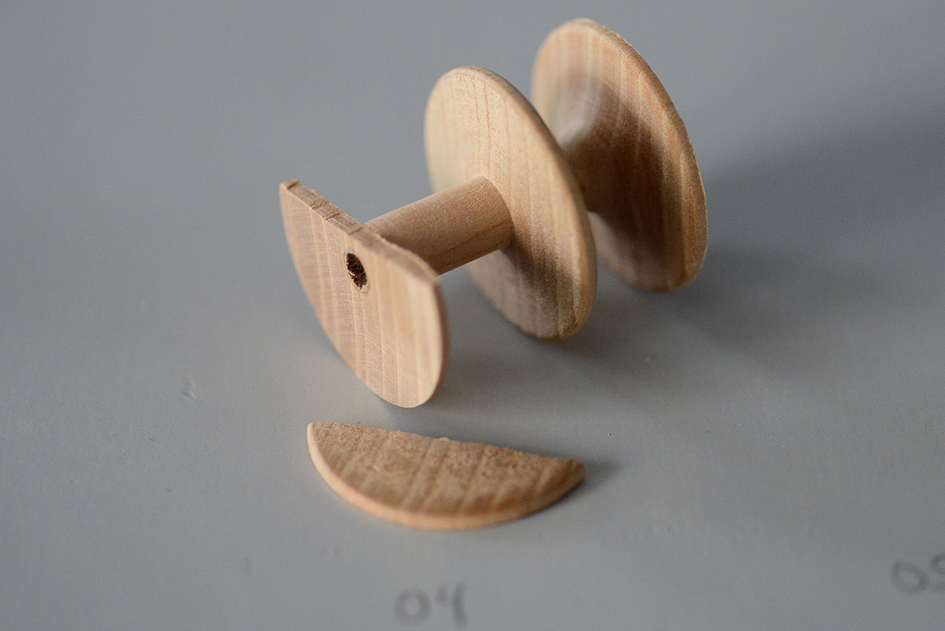
bobbin_04
- Rims not chipped
- Centred hole
- Minimal tear-out
- Snapped when sanding 🙁
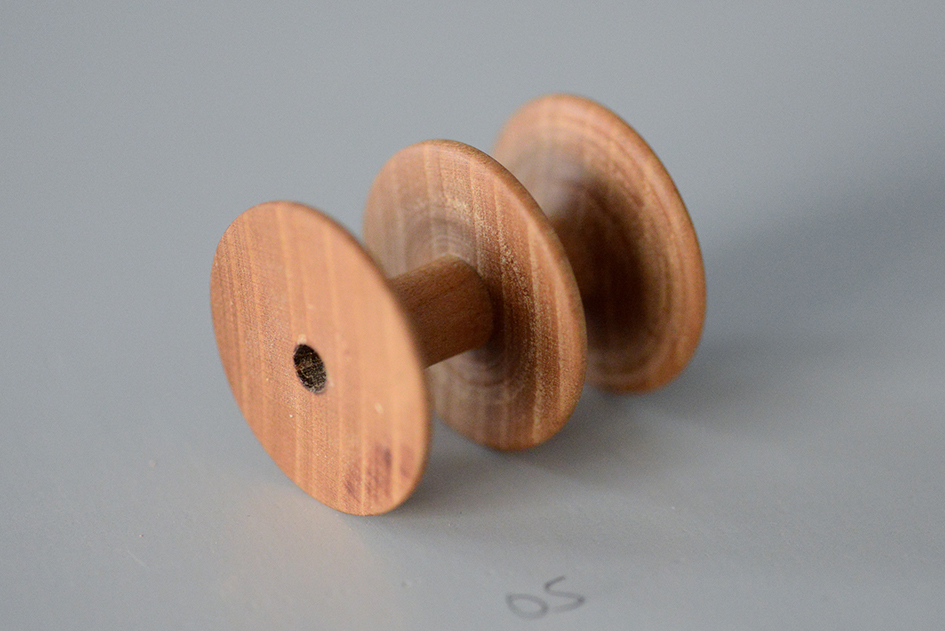
bobbin_05
- Smooth rims
- Hole not centred
- Noticeable tear-out
- Striation
- Finished with calendula oil
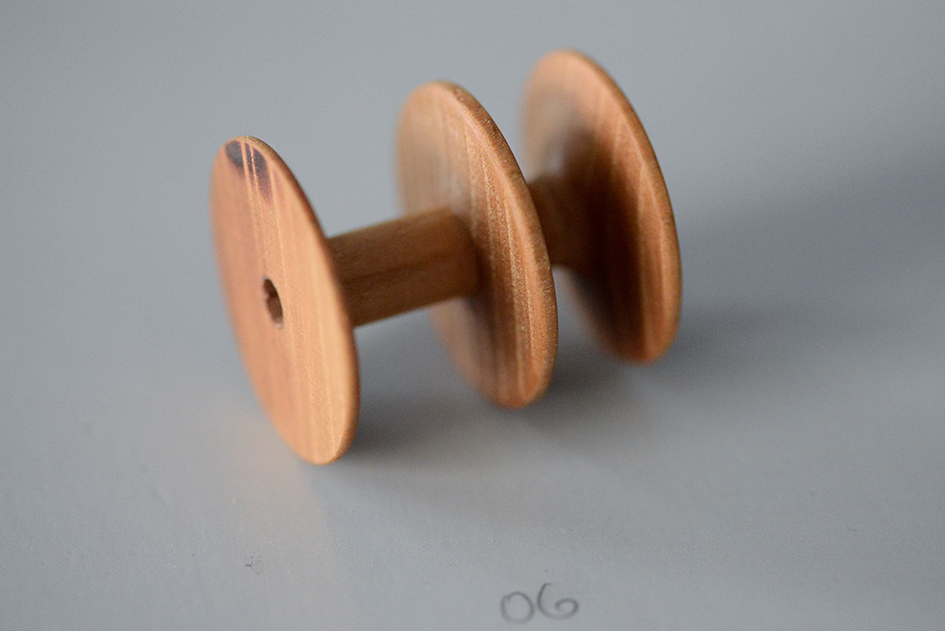
bobbin_06
- Smooth rims
- Hole centred
- Negligble tear-out
- No striation
- Correct size
- Finished with calendula oil
thoughts
It was surprising how quickly I was able to recreate the scale of the bobbin and reduce the more common issues like tear-out and striation. The cherry wood is smooth and pleasant to turn, and each of the prototype bobbins were relatively easy to match in size.
The bobbins are incredibly satisfying to hold in my hand, and I found myself playing with them absentmindely as I would handle computer-based tasks – kind of like a hand-carved fidget-spinner. I also noticed how much I enjoyed sanding the final edges of each bobbin. The majority of the bobbins are sanded whilst still on the lathe, but the outer sides and edges are sanded by hand after being removed from the lathe and drilling the centre hole. This final finishing touch builds a deeper connection with the bobbin, a cherry on the top of the feeling of pride that comes with the crafting of each tiny spool.
Each bobbin has an identity and an experience attached to its creation, and I wondering how to define and/or track that. The obvious metric is how long it takes to turn each bobbin, but there are other experiences involved in their crafting. What music or audio am I listening to? How many cups of tea did I drink? What was the weather? What was my mood? How can I track/digitise this information? And how do I store this form of data alongside the physical artefact?
Wanting to create these “experience markers” for each bobbin reminds me of Clue, the app I use to track my menstrual cycle. I found myself wanting to be able to attach tags to each bobbin, similar to Clue’s categorised, icon-based tracking system. It could be an interesting place to start…
what now?
Going forward from here, I’d like to begin testing how reliably I can reproduce the bobbins. Naturally I expect each bobbin to vary slightly with its own fingerprint, but I do expect to be able to attain a certain degree of uniformity. I’d also like to try making some bobbins using birch for comparison. Finally on the technical front, I would like to find a better finish for the cherry. Calendula oil was simply what I had to hand, but it overpowered the delicate cherry grain and seems to sit too “heavy” in the wood.
In terms of tracking the experience of each bobbin, I will need to test different systems. Handwritten notes, spreadsheets, and icons or tags are all examples of ways I could quantify the experiences embedded within each bobbin. As I continue making prototype bobbins, I can prototype the documentation alongside them.
references
- Diderot & d’Alembert. (2002) L’ Encyclopedie: Art de la Soie. Paris: Bibliotheque de l’image.
- Zupko, R. E. (1990) Revolution in Measurement. Philadelphia: American Philosophical Society.
Datenschutzerklärung — Impressum
©Emma Wood 2025
